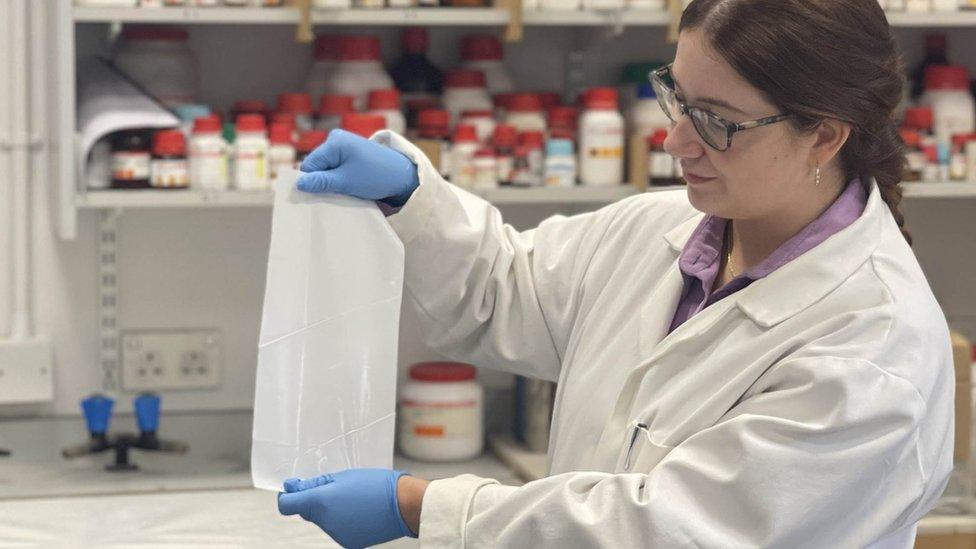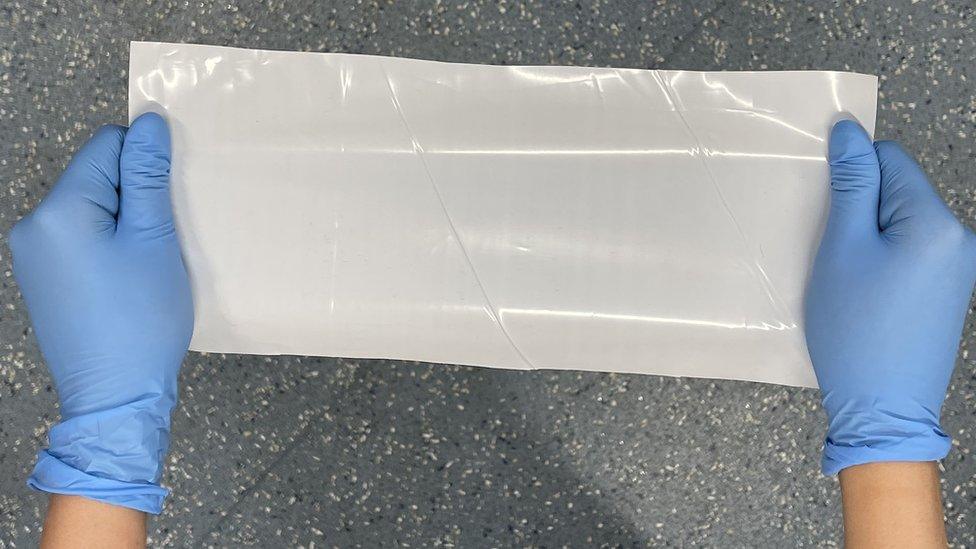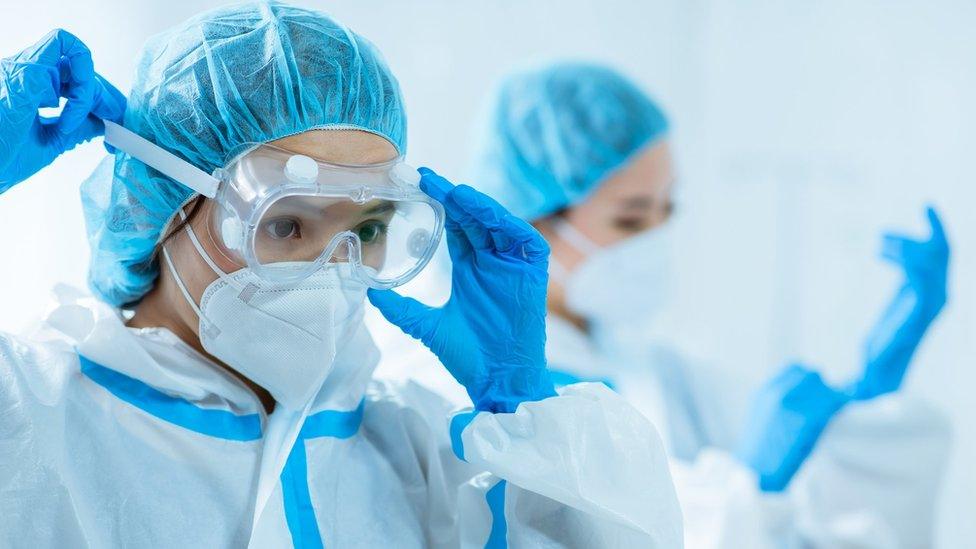Self-sterilising plastic kills viruses like Covid
- Published

The plastic sheets sterilise themselves when exposed to light
Scientists have developed a virus-killing plastic that could make it harder for bugs, including Covid, to spread in hospitals and care homes.
The team at Queen's University Belfast say their plastic film is cheap and could be fashioned into protective gear such as aprons.
It works by reacting with light to release chemicals that break the virus.
The study showed it could kill viruses by the million, even in tough species which linger on clothes and surfaces.
The research was accelerated as part of the UK's response to the Covid pandemic.
Studies had shown the Covid virus was able to survive for up to 72 hours, external on some surfaces, but that is nothing compared to sturdier species. Norovirus - known as the winter vomiting bug - can survive outside the body for two weeks, external while waiting for somebody new to infect.
The team of chemists and virologists investigated self-sterilising materials that reduce the risk of contaminated surfaces spreading infections.

The idea is to make a material so hostile to a virus that it cannot survive there. The metal copper has been shown to kill microbes, external on contact, but is not very flexible.
So the researchers used thin sheets of plastic that contained nanoparticles of titanium dioxide. These react with ultraviolet light - even the tiny amount released from a fluorescent bulb - to release molecules called reactive oxygen species.
These are just itching to get involved in any chemical reaction. They react with the virus's genetic material, the proteins it uses to invade our body and the fatty sphere that holds it all together. The end result is a dead and useless virus.
"This is the first time that anything like this has been developed," said Prof Andrew Mills, from the university's chemistry department.
He added: "This film could replace many of the disposable plastic films used in the healthcare industry as it has the added value of being self-sterilising at no real extra cost."
The material was tested in the laboratory against four types of virus - two influenzas, the Covid virus and a picornavirus, which has the traits that make a virus highly stable outside the body.
In controlled laboratory conditions, about one million virus particles were placed on the self-sterilising plastic. This is far beyond the amount of virus that would be needed to start an infection.
"It goes from one million viruses down to nothing, and we can see an effect in less than one hour and maximum death in two hours," said Dr Connor Bamford, from the school of medicine at Queen's.
"But we are adding a super-amount of virus to really challenge the system, it is likely there is an effect in the first few minutes."

The researchers aim to fashion their plastic into protective equipment used in hospitals
He said current personal protective equipment used in hospitals did a good job, but "infections can take place when you take off or put on the PPE, so this can help".
Other areas being investigated include hospital tablecloths and curtains, as well as in the food processing industry.
However, it will take proper trials in the real world to work out how big a difference self-sterilising protective gear could make.
The study has been published, external in the journal of Journal of Photochemistry and Photobiology B: Biology.
Follow James on Twitter., external